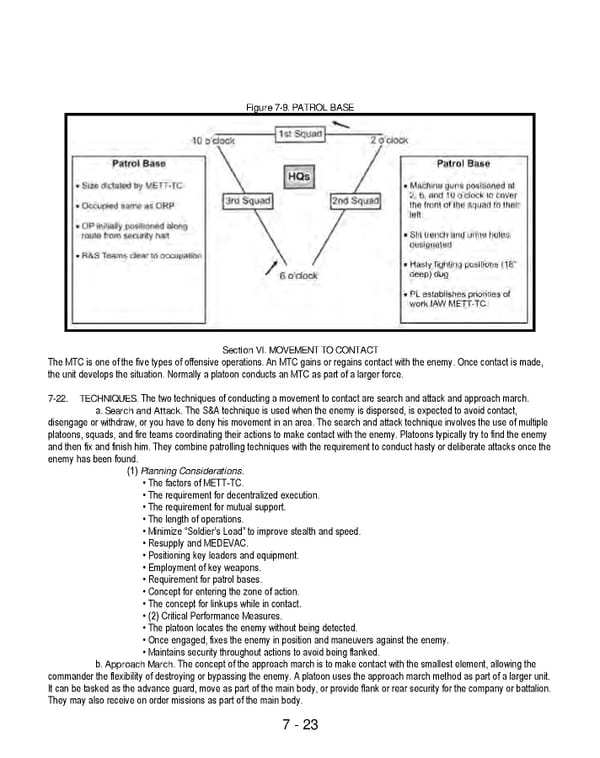7 - 23 Figure 7-9. PATROL BASE Section VI. MOVEMENT TO CONTACT The MTC is one of the five types of offensive operations. An MTC gains or regains contact with the enemy. Once contact is made, the unit develops the situation. Normally a platoon conducts an MTC as part of a larger force. 7-22. TECHNIQUES. The two techniques of conducting a movement to contact are search and attack and approach march. a. Search and Attack. The S&A technique is used when the enemy is dispersed, is expected to avoid contact, disengage or withdraw, or you have to deny his movement in an area. The search and attack technique involves the use of multiple platoons, squads, and fire teams coordinating their actions to make contact with the enemy. Platoons typically try to find the enemy and then fix and finish him. They combine patrolling techniques with the requirement to conduct hasty or deliberate attacks once the enemy has been found. (1) Planning Considerations. • The factors of METT-TC. • The requirement for decentralized execution. • The requirement for mutual support. • The length of operations. • Minimize “Soldier’s Load” to improve stealth and speed. • Resupply and MEDEVAC. • Positioning key leaders and equipment. • Employment of key weapons. • Requirement for patrol bases. • Concept for entering the zone of action. • The concept for linkups while in contact. • (2) Critical Performance Measures. • The platoon locates the enemy without being detected. • Once engaged, fixes the enemy in position and maneuvers against the enemy. • Maintains security throughout actions to avoid being flanked. b. Approach March. The concept of the approach march is to make contact with the smallest element, allowing the commander the flexibility of destroying or bypassing the enemy. A platoon uses the approach march method as part of a larger unit. It can be tasked as the advance guard, move as part of the main body, or provide flank or rear security for the company or battalion. They may also receive on order missions as part of the main body.
 Ranger Handbook Page 134 Page 136
Ranger Handbook Page 134 Page 136